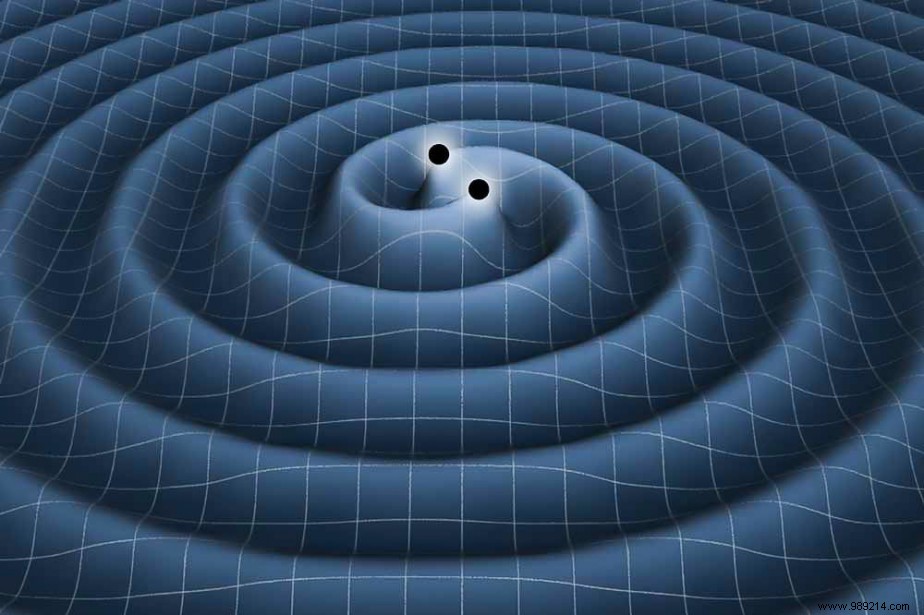It's still a long way off, but European physicists' plans to build a massive new gravitational wave detector, the "Einstein Telescope, may soon come to fruition.
There are currently three main gravitational wave detectors in the world:the two LIGO facilities in the United States (in Louisiana and Washington State) and VIRGO, in Italy . The latter detect them by laser interferometry.
Here's how it works:two very massive objects (such as black holes or neutron stars) approaching each other in space will generate ripples in the fabric of the space-time . These will cross space at the speed of light and reach our planet after a while. If so, then these waves will compress and stretch in alternating series everything they touch.
To detect these fluctuations, gravitational wave observatories use a laser beam. This ray passes through a semi-reflecting mirror to be split in two. These two rays will then bounce off two other mirrors which will send them back to a detector. In the event of passages of gravitational waves (in other words, in the event of alternating series deformation of the fabric of space-time), these two rays will fluctuate successively and find themselves out of phase when touching the final detector (see the CNRS explanatory video below).
Over the past five years, physicists have spotted dozens of mergers involving black holes or neutron stars. More recently, researchers have also confirmed two cases of mixed black hole/neutron star mergers.
These events were therefore recorded by LIGO AND VIRGO, both capable of detecting mergers of massive objects more than ten billion light years away. What physicists would like today is to be able to record such events whose origin is even more distant.

To do this, we therefore need larger and more sensitive detectors. In this sense, European researchers have been working for several years on the development of a new observatory:the Einstein Telescope. Imagine an underground equilateral triangle housing a total of six V-shaped interferometers (two in each corner) with arms ten kilometers long .
For comparison, LIGO consists of two interferometers, each with arms four kilometers long, while the European detector VIRGO offers arms three kilometers long.
For now, this is only a project on paper, but a project that is moving forward. The European Strategy Forum on Research Infrastructures (ESFRI), which advises European governments on research priorities, has just registered this €1.9 billion observatory on the roadmap of major scientific projects ready to progress . The developers hope that this decision will give them the political validation necessary to bring this incredible project to fruition.
“This is not a pledge of funding, but it shows a clear intent to pursue this goal “, said Harald Lück, gravitational wave physicist at Gottfried Wilhelm Leibniz University in Hannover (Germany) and co-chairman of the Organizing Committee.
Over the next three or four years, the developers of the Einstein Telescope will flesh out their project with the goal of submitting a more detailed technical design report. Importantly, they will also begin the process of expanding international collaboration to support the telescope. Currently, only Belgium, Italy, the Netherlands, Poland and Spain are in the game.
If all goes according to plan, physicists hope to begin building the observatory by the mid-2030s .